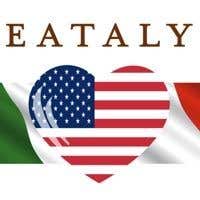This article was also published in the Financial Times.
Eataly, which opened on New York's Madison Square at the end of August, is unlike anything I have ever seen before.
At 50,000 sq ft, it is far larger than the original Eataly in Turin or the even smaller branches in Bologna or Japan. Initially to a Londoner it may appear comparable to the food halls of Selfridges or Harrods, but because everything in this eat in or out emporium is Italian and run by one company rather than a series of franchises from different cultures, it seems more homogeneous, more simpatico. And because it is all located on the ground floor (of the Toy Building where the toy companies used to have their showrooms), it is more accessible and fun than the many food halls located in basements.
The original investment of US$20 million ('and counting', according to one of its main partners) has been matched by an equally enormous response. On one Saturday 12,800 customers poured through Eataly's doors, a number that led to queues having to wait outside, although they did receive a temporary reward in the form of an ice-cream tasting.
But one other figure is even more impressive. So far Eataly has created over 500 new jobs and that is without counting the positive impact its success will have on the artisanal food producers whose wares adorn its many shelves. The project took over two years from planning to opening but this apparently would have been even longer but for active support and encouragement from Mayor Bloomberg's office.
Eataly New York has two significant investors, who between them have put up half the capital, three main characters and substantial backing from five major Italian companies (Lavazza coffee, Petra flour, Gran Padano Parmesan, Moretti beer and Fontanafredda wine).
Oscar Farinetti created the Eataly brand after an initially successful business career led him to buy wineries in Italy, including Fontanafredda in Piemonte, in which he has subsequently opened successful restaurants. In New York he has teamed up with Joe Bastianich and Mario Batali, who, since they met in 1997 working as lead waiter and lead chef at a prestigious diner, have opened Babbo, Otto and Del Posto restaurants, each not that far from Eataly, to great acclaim. Yet despite their impressive track record, the initial success of Eataly seems to have stunned even them.
On plan, Eataly resembles a gun, with the barrel running between the entrances on 5th Avenue west and the handle running down to 23rd Street. This means that access is pretty easy (depending on the queues, of course) if you want to drop in for a coffee, an ice cream (not creamy enough in my opinion), a panini or a pastry. By the 23rd Street exit are the areas devoted to cured meats, mozzarella, pasta, T shirts whose logos are changed every week, and the wine shop, which, to meet the state's arcane licensing laws, has to be in a separate building.
But it is the heart of Eataly, its cafes and restaurants, which is the most exciting part because the principals have decided to adopt the casual Italian approach even when they have to fill 475 seats several times a day to prosper.
La Piazza is the area where I felt I was immediately transported to the heart of Milan or Turin. This is a standing-only area, where the food is prepared in the four corners of the surrounding hall but the food order is taken, and brought to you, by bright and breezy staff. Other casual areas specialise in pizza and pasta, fish and vegetable dishes at Il Pesce and Le Verdure respectively. Only at Manzo, the meat restaurant and the only really formal setting with an exceptional chef in Michael Toscano, are reservations taken, but strictly on a 'first come, first served' basis.
Over coffee in Manzo, Bastianich, who is responsible for the service and business aspects, said something to Batali (who confesses that he enters Eataly 'only from the delicious point of view') that had even this normally garrulous chef lost for words. 'As it stands at the moment, Eataly is on course to being the highest grossing restaurant in the city by the end of our first year. We're looking at annual sales of over US$40 million once we've got the alpine restaurant on the roof open which will seat another 200 with a micro-brewery.'
There are several reasons for this success. The synergy of retail and restaurants is one that, when it is well managed, should lead to maximum customer satisfaction and minimum waste. Farinetti has chosen his partners cleverly and in Batali he has a figurehead that seems to draw every female customer to his side, scrabbling for her mobile phone so that she can have her picture taken alongside a famous TV chef in orange shorts and Crocs. Batali's conspicuous passion for 'all things good at the table' is also hugely important, as is the enthusiasm he imparts to his staff.
While New Yorkers, the partners and the shareholders are Eataly's most immediate beneficiaries, two others may not be too far behind.
The first is the image and reputation of Italy itself that can only prosper in the wake of this success. Then there are those in several cities in North and South America where, Batali believes, this formula can be repeated. I asked him to put London on that list.
www.eataly.com

